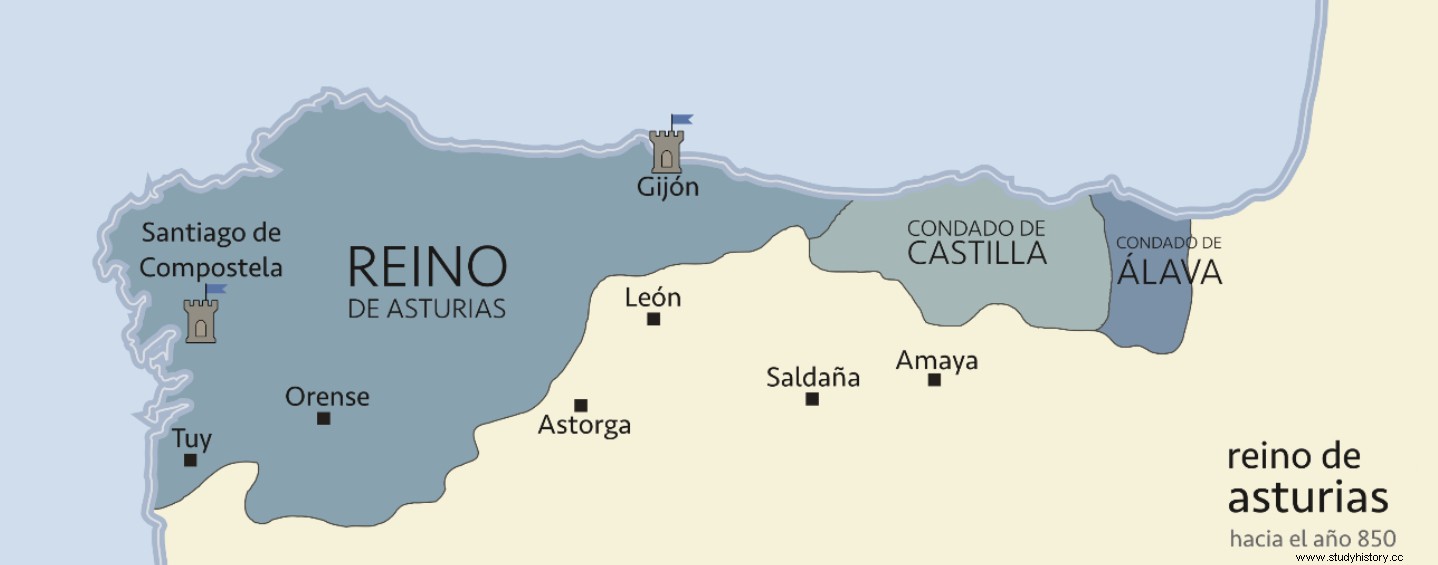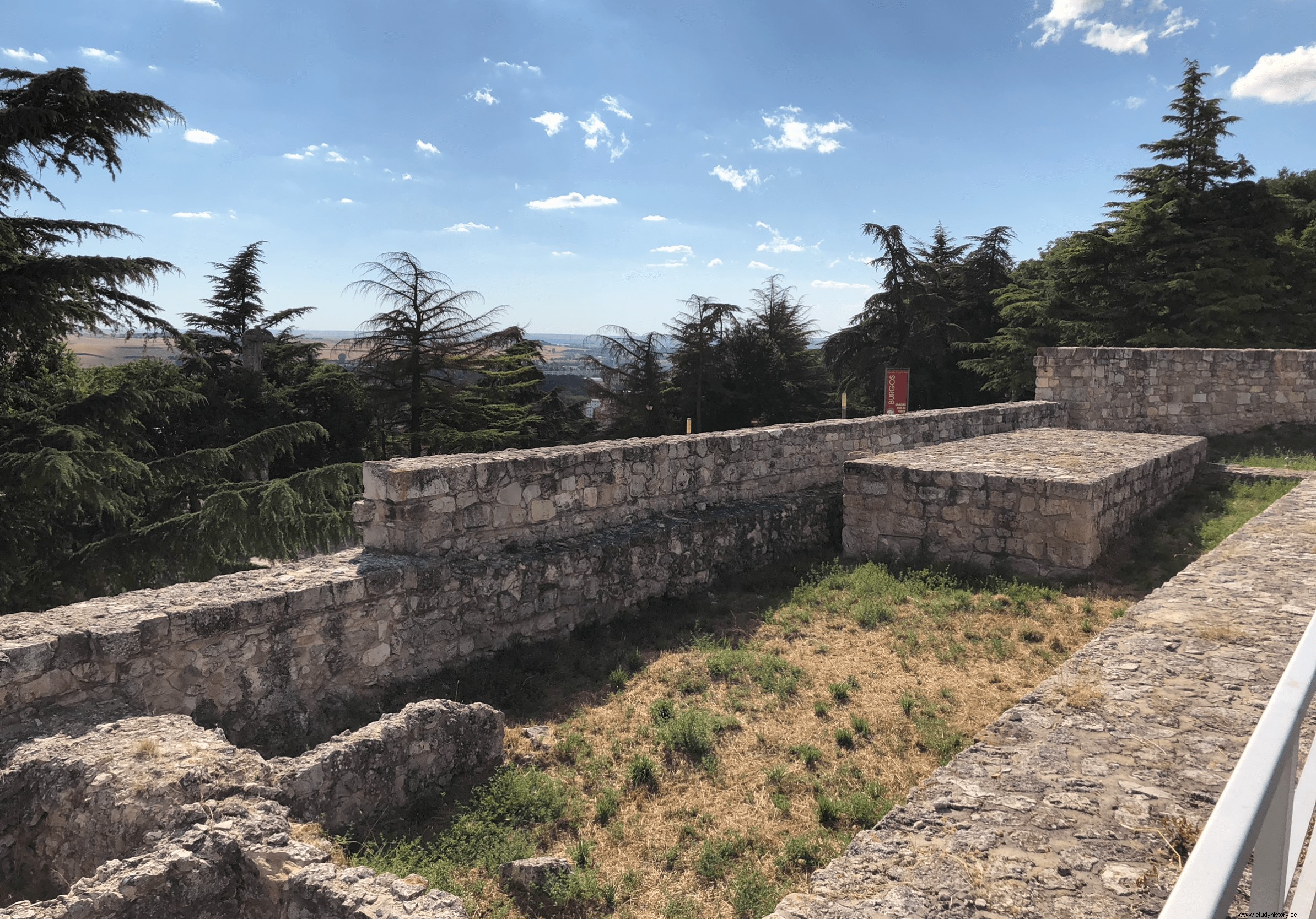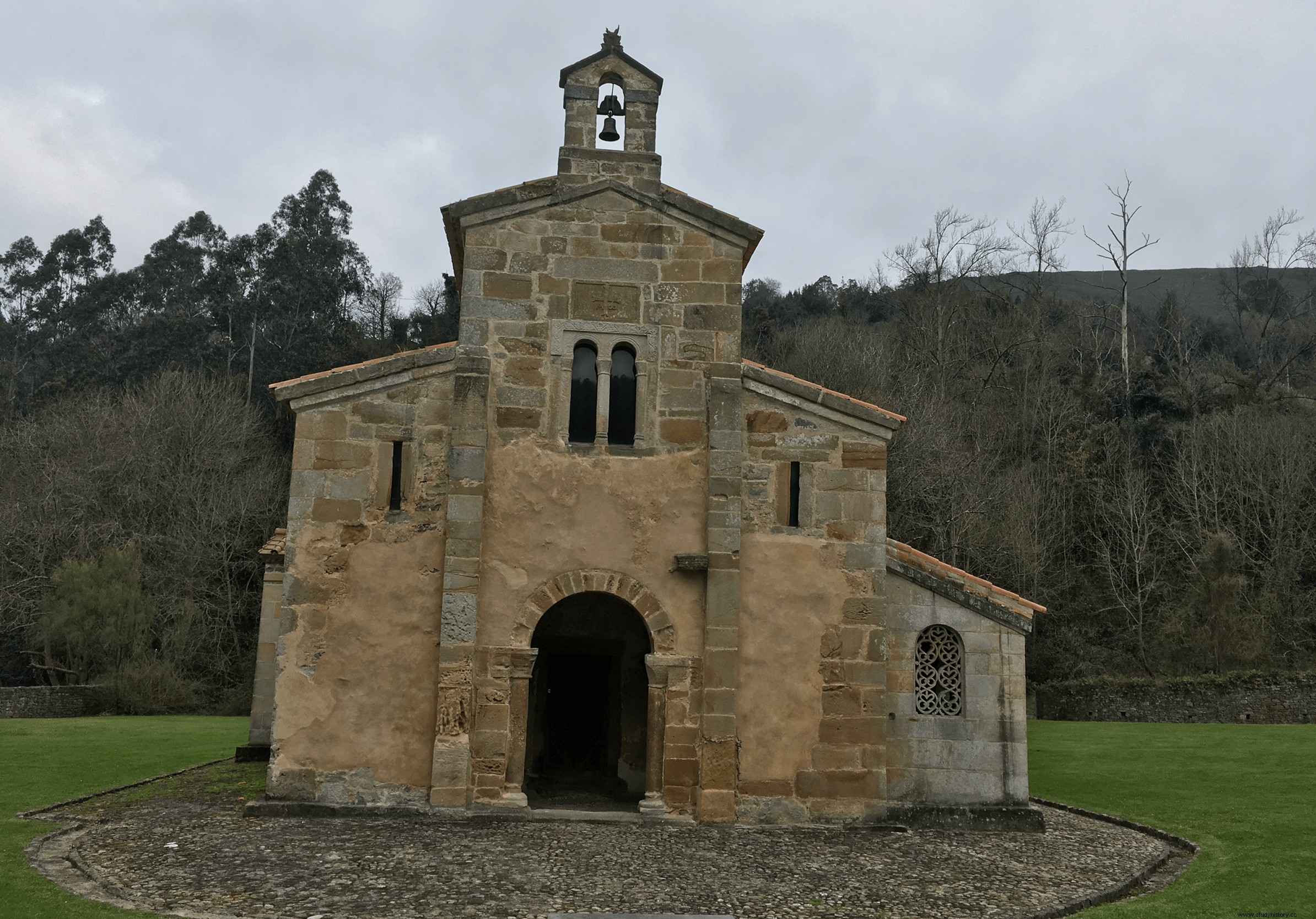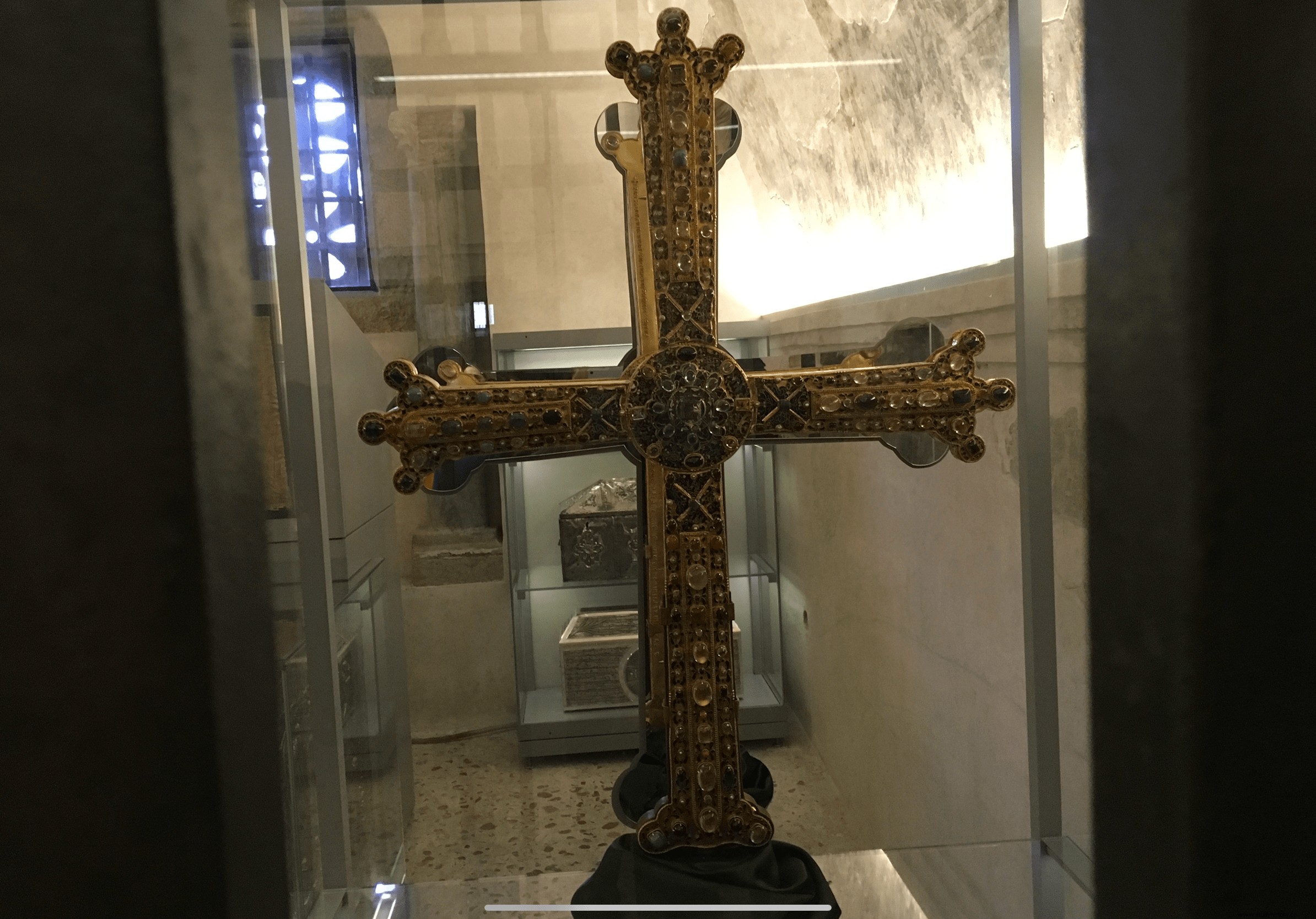Entry taken from the book From Covadonga to Tamarón .

On December 20, 910, one of the most important kings of the medieval peninsular kingdoms died:Alfonso III the Great. His rise to the throne was not easy. When the King of Asturias Ordoño I died, his eldest son, Alfonso, was eighteen years old and had government experience, since he had collaborated with his father, possibly through the formula of association to the throne to take charge of Galicia, from the fourteen. That did not prevent a nobleman named Fruela Bermúdez, Count of Lugo and of Galician origin, from trying to dethrone him and gird the crown. Alfonso was forced to take refuge in Castile, dominated by Count Rodrigo, a firm supporter of his. According to some sources, Rodrigo accompanied the king to Asturias to confront the rebellion, while others suggest that the Asturian nobles themselves took care of disrupting Fruela's maneuver and Alfonso was able to return and sit on the throne. The traitor was executed.
Alfonso III ruled for forty-four years (866-910), during which he greatly expanded the borders of his kingdom at the expense of the weakened Emirate of Cordoba. He conquered important cities such as Porto, Coyanza (Valencia de Don Juan), Sahagún, Braga, Coimbra, Cea and Guimaraes. In the year 878, near Benavente, in a place known as La Polvoraria or Polvorosa, he won a resounding victory over the Cordobans. Some source puts the Arab casualties at thirteen thousand. Not content with this, Alfonso III then set out to face another Muslim contingent, whom he also defeated in Valdemora, about fifteen kilometers from the current town of Valencia de Don Juan (then Castillo de Coyanza).
Later, in the year 901, a call to holy war by a Muslim leader caused an army of about sixty thousand men, commanded by an Umayyad prince named Ahmad ibn Muawiya, will throw himself against Zamora. Alfonso III led the Christian forces to face the threat and, after several days of combat that seemed favorable to the Arabs, the king decided to surround the Muslim camp at night and achieved victory in what was known as the Day of the Moat of Zamora. .
In the following maps you can see the situation in the year 850, shortly before the accession to the throne of Alfonso III, compared to the situation in the year 930, somewhat after his death.


After his victories in the year 878, Alfonso III obtained from the emir of Córdoba the signing of a three-year truce, which he took advantage of to strengthen the military situation of his kingdom and prepare it for consolidate not only the southern border of the kingdom, but also the defenses in general, in addition to the organizational structure of the repopulated territories in the last reigns. Numerous castles were built in this way between the Cantabrian mountain range and the Duero (Luna, Alba, Gordón, La Valcueya), but it was also used to build fortresses on the Asturian coastline (Castrillón, San Martín), on the main communication lines of the kingdom. (Curiel, Tudela) and various defensive buildings in the capital of the kingdom, Oviedo.

Also, the southward shift of the line border of the kingdom was marked by the construction of different castles along it:Zamora and Toro on the banks of the Duero; Simancas and Dueñas in the Pisuerga; and in the thriving county of Castile, under the command of its second count Diego, the repopulation of the Gothic Fields and Ubierna was undertaken (882). In the east, to prevent new incursions, he commissioned Don Diego to build a fortress on a hill next to the Arlanzón River. That fortress, founded in the year 884, would be the future capital of Castile and would be called Burgos.

Alfonso III also took advantage of the truce to shore up the organization administrative and religious of the kingdom, restoring various episcopal seats from the Visigothic era already on conquered land. In addition, he undertook the construction of a significant number of churches and monasteries:San Salvador de Valdediós, San Adriano de Tuñón, San Miguel de Villardedeyo, San Pedro de Cardeña, San Benito de Sahagún, among others.
It also stands out, due to its symbolism, the confection and donation to the cathedral of Oviedo to celebrate the centenary of another donation (that of the Cross of the Angels by Alfonso II), of the magnificent Cruz de la Victoria, which covered with a spectacular goldsmith work what, in theory, was the wooden cross that Don Pelayo carried in Covadonga and that was in the church of Santa Cruz de Cangas de Onís, built by Favila . This cross is currently the emblem of Asturias.

One of the most notable features of Alfonso's reign III was his eagerness to write down the history of his kingdom. It is true that the objective pursued with these chronicles was more related to his expansionist ambitions than to historical reliability. The first chronicle of the kingdom of Asturias from the reign of Alfonso III is the so-called Crónica albendense , completed around the year 883, so called because the copy that is preserved comes from the monastery of La Albelda (La Rioja), which tells a universal story, albeit with a hagiographic account of the monarch during whose mandate this work was written. A few years later the Crónica alfonsina was written , so called because it is believed that it was written by Alfonso III himself or with a very direct influence from him, which narrates the history of the Visigoth and Asturian kingdoms, from Wamba to Ordoño I. The Rotensian version of this chronicle (so called because it is known through a codex preserved in Roda) is more concise and with a more popular approach. The version ad Sebastianum from the Alfonsine Chronicle (so named because it is headed by a letter from Alfonso III to someone named Sebastián) is more careful and seems to be a cultured evolution of the Rotense, polished by Sebastián himself, probably a bishop, at the request of Alfonso III.
It should be taken into account that in the 880s the Emirate of Cordoba was in a situation of decomposition caused by the advance of the Christian domains and by the internal rebellions in places like Mérida , Toledo, Ronda or Zaragoza, which meant that the emirate only effectively controlled the area near Córdoba. This encouraged the Asturian monarch to dream of recovering all the possessions of Visigoth Hispania and motivated the writing of the chronicles that we have cited and his claim that the Asturian monarchy be heir to the Visigoth. In this sense, Alfonso III can be considered the ideologue of the concept of the Reconquest.
Of course, I am referring exclusively to the concept of recovery of the peninsular Christian domains outlined by Alfonso III in the 9th century, not to the term Reconquest , as it was used in the 19th century, nor to the ideological constructions that have perverted this term, to praise or denigrate it, in the 19th, 20th and 21st centuries.
As pointed out by the work of Gordo Molina and Melo Carrasco (Coord.) The Peninsular Middle Ages, approaches and problems. (Gijón. Ediciones Trea, S. L., p. 128.):
Cleansed of the interested ideologizations that it has been the subject of since the 19th century, the word Reconquest may be perfectly adequate to designate the ideology that at very different times of the peninsular Middle Ages served the Hispanic monarchs to legitimize a power that knew how to make military and expansive caudillism the basis of its own justification. This consisted of converting the unitary past of old Visigothic Spain into a challenge for the future, and for this the ideologues of the Reconquest did not hesitate to present the kings they served as the legitimate heirs and effective continuators of that past
The last years of the reign and the succession of Alfonso III were very convulsive… but that is another story, to which I will dedicate the second entry of this series.
Fonts|
Fernández de Lis, D. (2109). From Covadonga to Tamarón. The history of the Asturian-Leonese monarchy from Pelayo to Vermudo III.
Cádiz Álvarez, J. C. (2017) Prehistory. ancient Asturias. The kingdom of Asturias. Your consolidation . Nobel Editions.
Fernández Conde, F. J. (2015). Studies on the Asturian monarchy . Gijon. Trea S.L Editions
Fernández Conde, F. J., Gutiérrez González, A., Fernández Mier, M., Suárez Álvarez, M. J., Arias Páramo, L. (2009). Social and political powers in Asturias. 8th-10th centuries . Territory, society and power. Journal of Medieval Studies. Annex No. 2
Ladero Quesada, M. Á. (2014). The medieval formation of Spain . Madrid. Publisher Alliance. 2nd edition.
Manzano Moreno, E. (2015). History of Spain. Medieval times, volume 2. Madrid. Criticism. Editorial Marcial Pons
Gordo Molina, Á. and Melo Carrasco, D. (Coord.) (2017). The Peninsular Middle Ages, approaches and problems. Gijon. Ediciones Trea, S. L
García de Castro Valdés, C. and Ríos González, S. (1997). History of Asturias. Medieval Asturias . Gijon. Editions TREA S. L
Campomanes Calleja, E. (2004). Asturias:from kingdom to principality. Gijon. Editorial Picu Urriellu
Álvarez Palenzuela, V. Á. (Coord). (2017). History of Spain in the Middle Ages . Ariel. 7th impression.
Chao Prieto, R. History of the kings of León. Rimpego editorial
Fernández Catón, J. M.ª. (2007). Monarch ia and society in the kingdom of León, from Alfonso III to Alfonso VII . Lion. Center for Studies and Research San Isidoro
Carvajal Castro, Á. (2017). Under the mask of Regnum:the Asturian monarchy in León (854-1037) . Madrid. Editorial CSIC.
Image| Author archive.
Maps| Juan Pérez Ventura.
